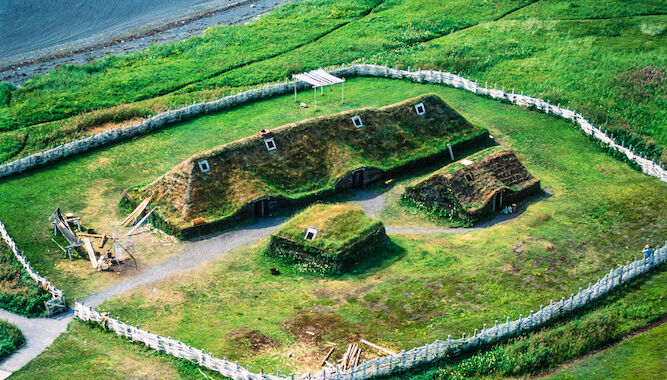
Glenn Nagel Photography
Centuries before Christopher Columbus stumbled across the Bahamas, the Vikings established a beachhead at L’Anse Aux Meadows, a site on the northern peninsula of what is now Newfoundland, Canada. A recent study narrows down the date of the Norse arrival in North America to as early as 1021 CE, based on scraps of discarded wood from the site and with help from the aftermath of an ancient solar storm.
Vikings and cosmic rays
In the early 1200s, Icelandic authors wrote down two sagas describing Norse explorers’ trips to a place called Vinland. The expeditions had happened about two centuries earlier. Based on those sagas and the types of artifacts left behind at L’Anse aux Meadows, archaeologists today generally agree that the Norse arrived sometime near the end of the 1st millennium CE. For a few years (between three and 10), the Norse settlers used the site as a base for explorations farther south—and then they left.
Radiocarbon dating of charcoal from L’Anse aux Meadows suggests that the Viking Age came to American shores sometime between 975 and 1020 CE. To narrow down when the Norse arrived in Newfoundland, University of Groningen chronologists Michael Dee and Margot Kuitems, along with their colleagues, looked for evidence of the year a solar storm bombarded Earth’s atmosphere with radiation.
In late 992 and early 993 CE, people in Korea, Germany, and Ireland all mentioned vibrant red auroras dancing in the night sky. Trees around the world trapped an unusually high amount of carbon-14 in their growth rings the following year. Carbon-14 forms in the upper atmosphere when highly energized particles called cosmic rays collide with nitrogen molecules. Usually, those cosmic rays come from events outside our Solar System, toward the center of the Milky Way galaxy, but physicists blame the 993 CE event on our own Sun.
Dendrochronologists (scientists who measure and date tree rings) discovered the carbon-14 spike and dated it to 993 CE in trees from sites around the world. Dee, Kuitems, and their colleagues recently used it as a landmark to help pinpoint the age of three wood fragments from L’Anse aux Meadows.
The fragments, which come from three different trees (a mixture of juniper and fir), were cast-off cuts of wood discarded by the Norse, but all still bear cut marks from iron tools. “We imagine they were refuse from construction projects or indeed just the clearance of land,” Dee told Ars.
All three wood fragments included at least part of a tree’s outermost ring (tree-ring enthusiasts call this the “waney layer”). That confirmed the fragments came from felled trees, not driftwood, whose bark would have been stripped away by the ocean. It also meant that Dee, Kuitems, and their colleagues could date the exact year the trees were cut down.
-
Microscope image of a wood fragment from the Norse layers at L’Anse aux Meadows.
Petra Doeve -
Microscope image of a wood fragment from the Norse layers at L’Anse aux Meadows.
Petra Doeve




